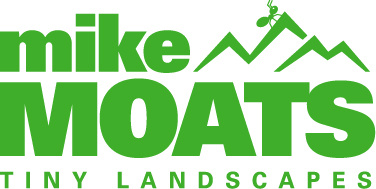If you have ever been to a photography workshop, instructional zoom meeting, pro speaking at your camera club, what they will teach you will be opposite of the way I shoot and teach.
For 18 years I have made a good living teaching thousands of photographers how I shoot macro/close-up photography and it's quite different than all the other pro photographers.
Every pro will tell you never shoot jpegs, always shoot in RAW mode. I have never shot RAW, only jpegs.
Why, because it works for me. I don't teach photographers that they should shoot jpegs, but if asked what I shoot, it's jpegs.
Photographers will say, Mike you are losing so much file information due to the jpeg compression. I think my images look pretty dam good, even with all that loss of file information.
With macro photography I get perfect exposure out of the camera because I control the lighting, unlike landscape and wildlife photographer who have to deal with exposure adjustments in post processing due to high dynamic range in their scenes, they can't control the light, so RAW works better for adjusting exposure in post, but jpegs work great for macro.
I'll stick with my jpegs; I don't follow the crowd if it's working for me.
Most experienced photographers will say to never shoot over f/16 because shooting over f/16 will cause diffraction in your images, which means your images will come out of the camera soft in the details.
I've been shooting at the highest f/stops (f/22 to f/32) of my lenses for 20 years, and yes there is a slight softness in my images out of the camera from diffraction, but we have sharpening software that will correct the softness.
I've never had anyone tell me my images looked soft in the details, but I have lots of people telling me my images look very sharp.
I've shot side by side with a lot of pro photographers over the years, and all of them have pro camera bodies that are very expensive. I have never used a camera body that costs over $1,000, exception was my very first digital camera which was the cheapest one you could buy in 2004 and that ran $2,000.
For macro/close-up photography you don't need an expensive camera body, so no need to spend a lot on a pro body.
I don't know many teaching pros who are not using Photoshop and Lightroom. People seem to think you have to use those programs to produce the best-looking images.
My main processing program is Smart Photo Editor, the stand-alone version costs $29 and way easier to use then Photoshop. That's the equivalent of three-monthly payments of Photoshop.
Although I do like the spot healing tool in Photoshop Elements, but at least with Elements I'm not making monthly payments.
I hear from all the experts that to get good depth of field in macro photography you have to focus stack.
I never focus stack and I have no problem getting all the depth of field I need at f/32.
If you have a subject with a cluttered background, I place one of my printed backgrounds behind the subject and get it all in focus at the f/32. Very simple, and no focus stacking.
If you are going for a soft-focus look, then you will be in low f/stop number ranges, so in that case you are not trying to get as much in focus, different style then what I typically shoot.
I will always have people telling me I'm doing any of these things wrong, but I've been pretty happy making my living doing it this way for 18 years.
Who's right and who's wrong, everyone has their own way of getting it done. I tend to go with the easiest way and not make it complicated or expensive for my students.
Here's an image that I'm always asked if I focus stack it, nope, f/32, everything in focus and the details look great.
Join my Macro Photo Club and learn how I do it.

